In the northern Japanese city of Yamagata, where winters are long and snowfalls are heavy, indoor play places are a godsend. Keen to develop an inclusive space that can be enjoyed by kids of all ages and abilities, the city acquired a former rice field and tasked onishimaki + hyakudayuki architects / o+h with the play center’s design. The Tokyo architects responded with a continuously curved building whose dynamic form draws both kids and their parents. Named Shelter Inclusive Place Copal (or just Copal, for short), the project was completed in March 2022.
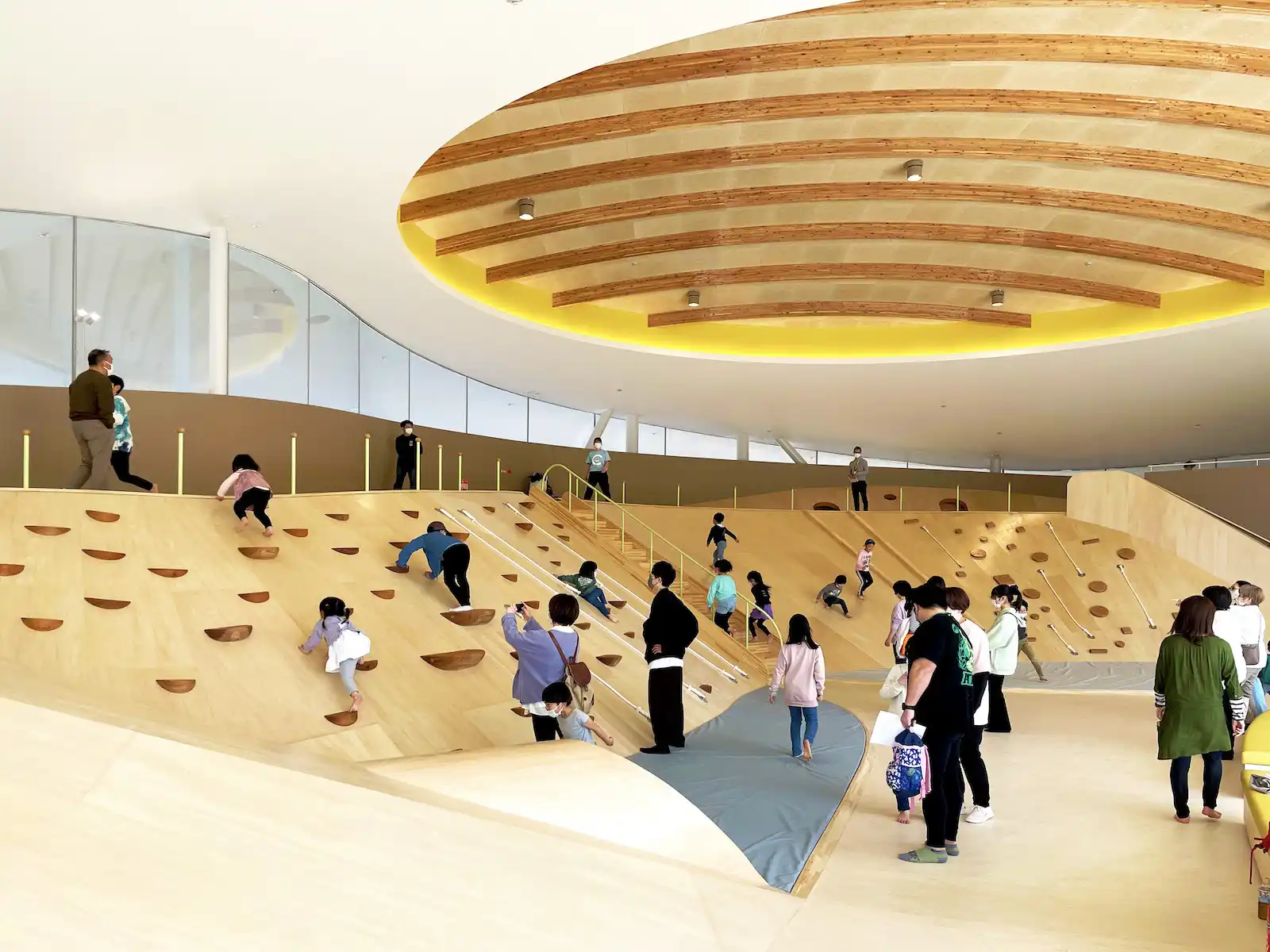
A ramp connecting the play area with the gym doubles as a spot for kids to scramble and let off steam. Photo courtesy o+h
The building’s form takes its cues from the snow-capped Zao Mountains visible from the site. It features two main spaces—an open play area and a sunken gymnasium—connected by a gentle ramp and crowned with an undulating roof. “We wanted to make the shape of the roof soft and generous to welcome people,” comments o+h partner Maki Onishi.
Approaching through the main entrance on the west side, kids and adults alike shed their street shoes per Japanese custom. The partly submerged gym, an inviting space covered with warm wood, is immediately revealed. “Usually a gym is surrounded by high walls and becomes a closed space,” explains Onishi. From here, the angled walkway connects the two main areas, with subsidiary rooms, such as offices, a café, and a multipurpose room, tucked beneath.

Copal was designed for users of all ages and abilities. Photo courtesy o+h
More than a mere conveyance, the ramped walkway is integral to the kids’ experience—the opportunity for play is building-wide. Animated with squiggly handrails, the slope invites discovery and imagination. Within the play area elements integrated with the architecture, such as a giant xylophone, a bouncy net, and a climbing wall, delight the eye, hand, and ear. Conspicuously absent are prefabricated toys and equipment. “We wanted kids to find ways to play by themselves,” explains Onishi. But achieving this goal required addressing the needs for safety and accessibility with textured surfaces, guidelines of contrasting colors and, of course, slopes instead of stairs.
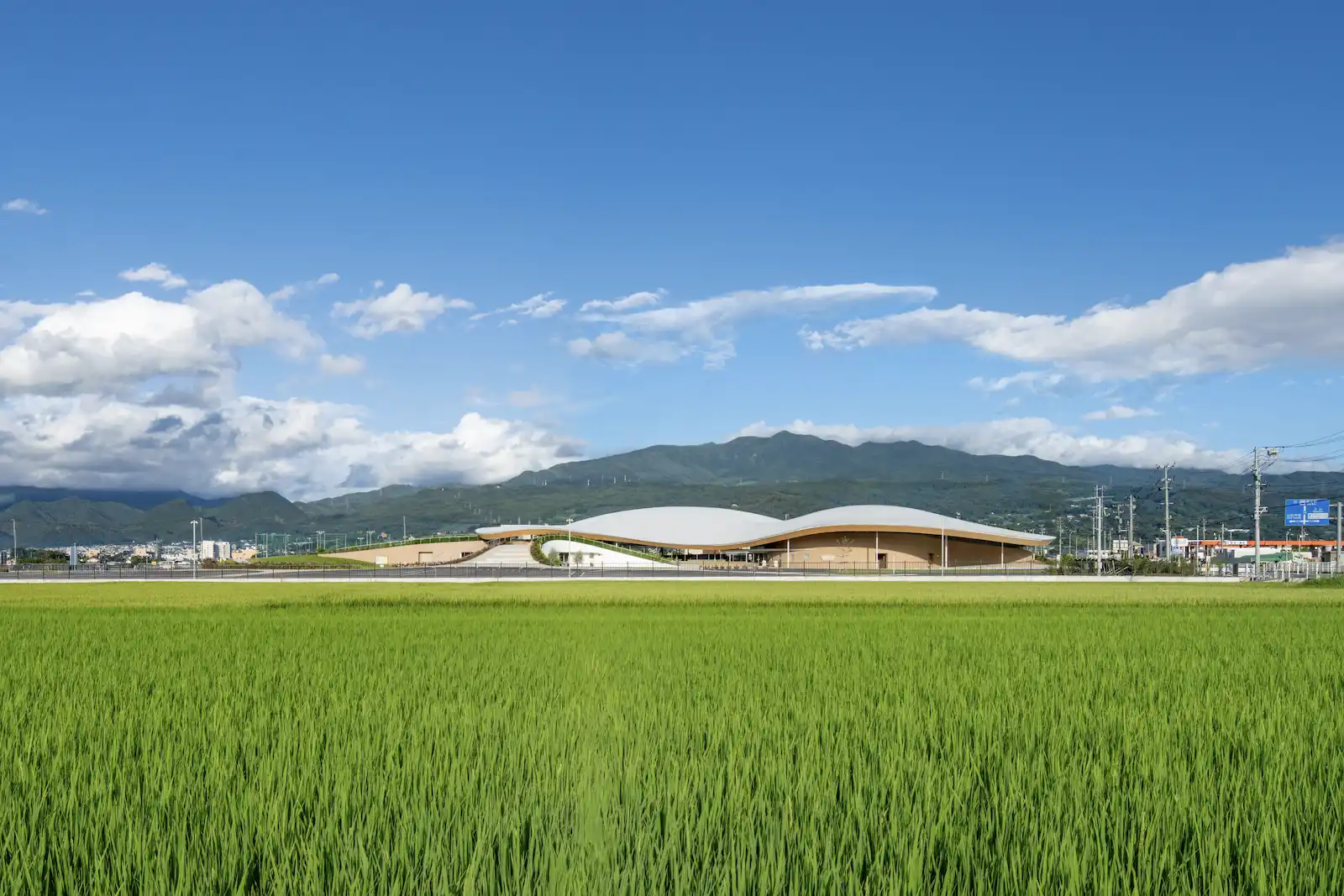
Designed in response to the nearby Zao mountain range, the building's curving domed roofline emerges from the rural flatlands of Yamagata in the Tōhoku region of northern Japan. Photo courtesy o+h
Overhead, a hybrid structural system supports the roof: a 3D curved, triangulated, steel truss plus arched, laminated cedar beams create separate, domed covers for the two main spaces. The asphalt shingle roof is supported by slender steel columns that transfer their load to the building’s concrete base. These are complemented by buttress-like steel braces that offer extra protection against earthquakes and lateral forces. Independent of the structural system, floor to ceiling glass panels, some curved and others straight, expose the interior to the surroundings.
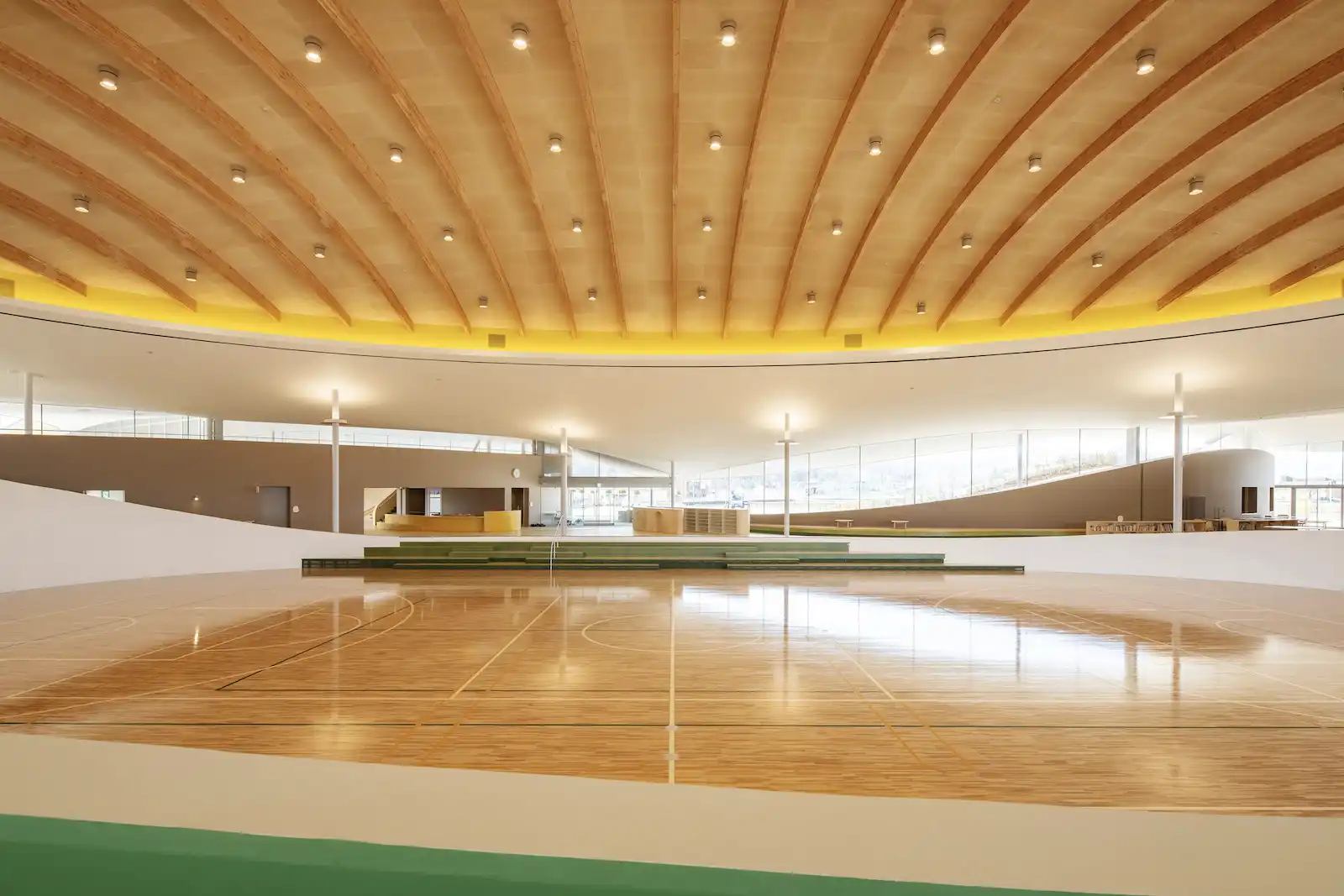
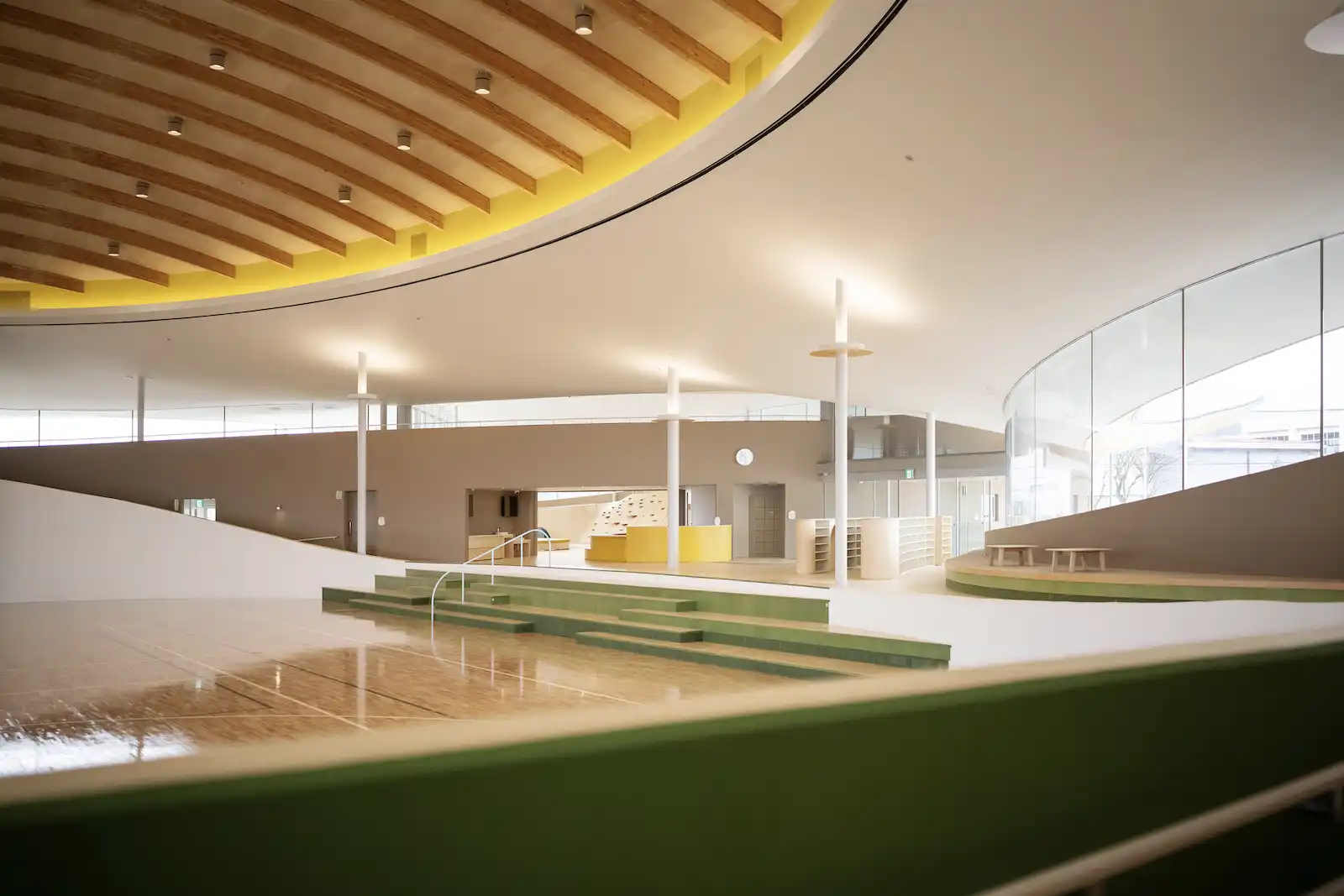
Gymnasium views with terraced seatings. Photos courtesy o+h
This open atmosphere is underscored by the building’s name. Implicit in Copal—a blend of the English word “pal” and the prefix “co” (also the start of the Japanese word for children, kodomo)—is the notion of a place where all kids can play together.
For younger visitors, a main draw at Copal is a sloping walkway featuring built-in play elements like a climbing surface, slide, and bouncing structure. Video courtesy o+h


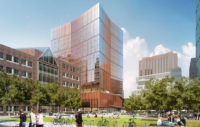

Post a comment to this article
Report Abusive Comment